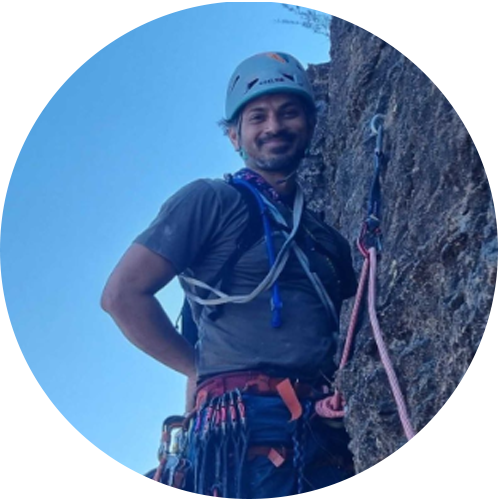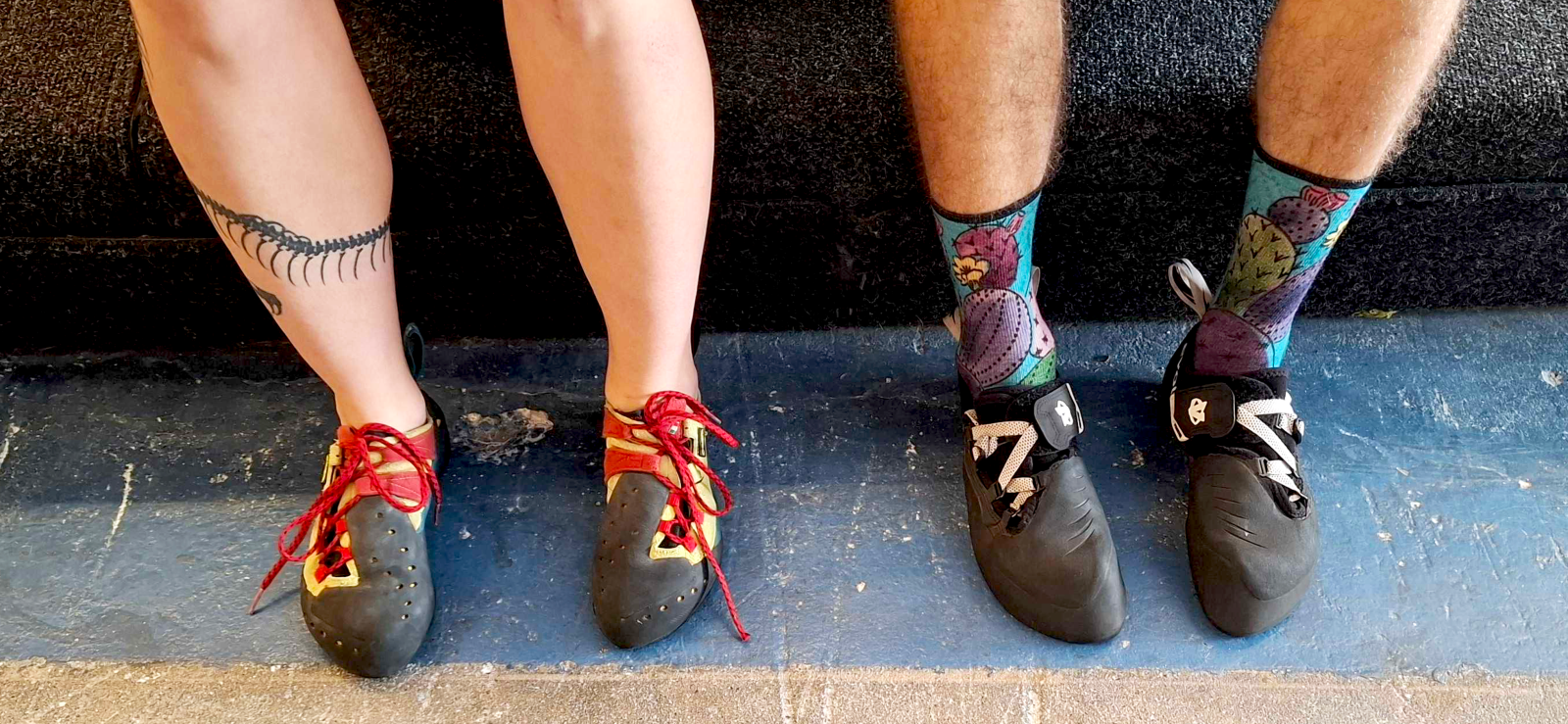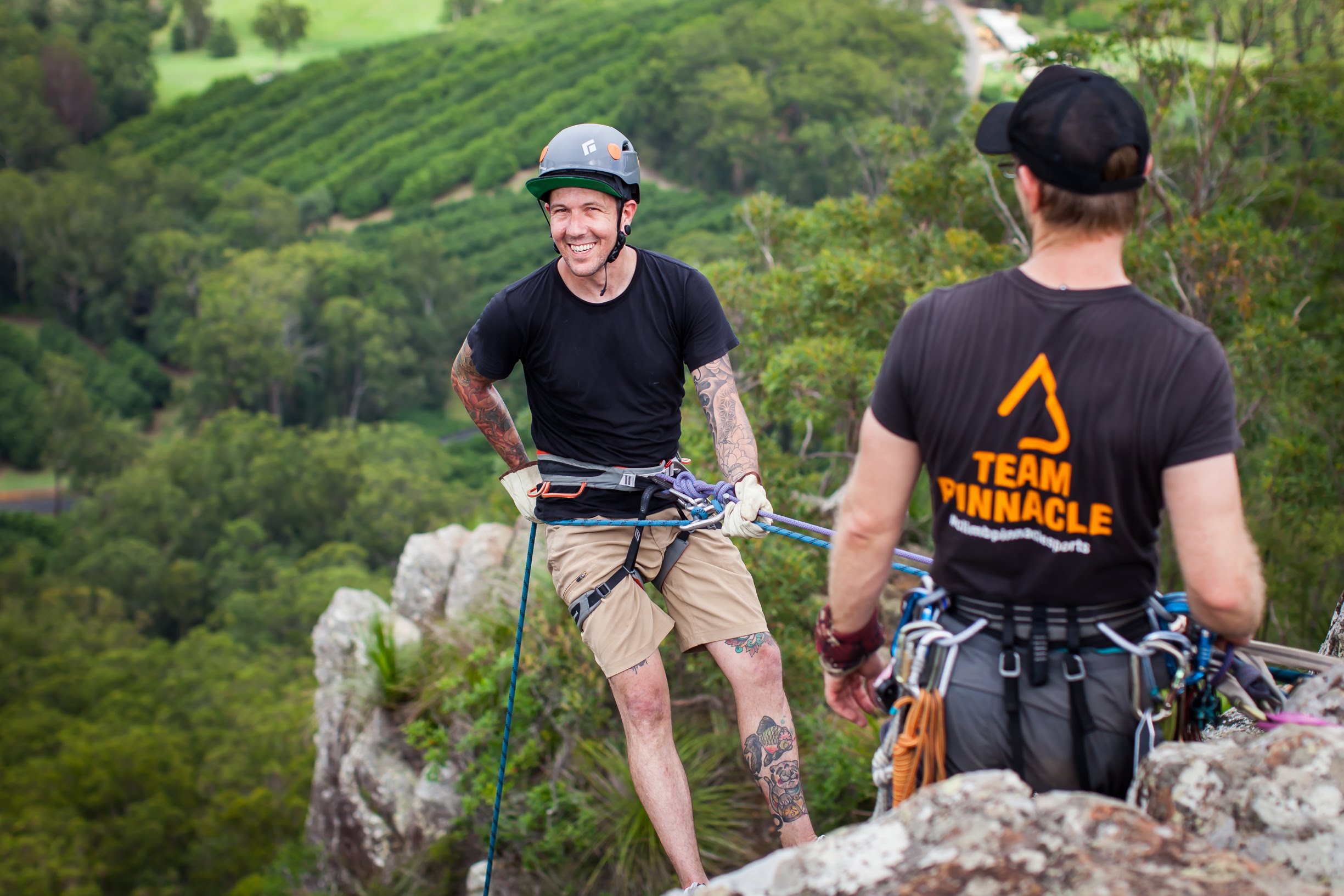 Written by Team Pinnacle's Manny More
Written by Team Pinnacle's Manny More
When it comes to rock climbing, every climber has their preference of gear based on what suits their needs. From the type of chalk you use to what knots you tie in with, preferences vary widely. But, one topic seems to be more controversial than the others. Whether to wear socks or not wear socks with your climbing shoes.
If you (like me) have been climbing for a while, you've probably seen climbers do both. Even though every picture of climbing pioneers showcases them scaling the most absurd line while wearing knee-high socks, the sight of socks with climbing shoes just doesn’t sit well with me.

I also tend to silently judge people walking around the gym wearing the most technical, sensitive shoes with socks. But it wasn’t until I did some research that I realised that, in reality, there is no wrong answer. Let’s break down the pros and cons of wearing socks while scaling walls, both plastic and rock.
Pros of Wearing Socks
Comfort and Reduced Friction Climbing shoes are notoriously snug. Adding a thin pair of socks can reduce the rubbing that often leads to blisters, hot spots, or painful pressure points—especially during long climbing sessions.
Hygiene and Odor Control. Let’s be honest—climbing shoes can get dank. Socks act as a barrier that absorbs sweat and helps prevent bacteria build-up, keeping your shoes (and the people around you) a bit happier. You could also throw in
Boot Bananas to keep your shoes odour-free.
Easier to Break In Shoes. Wearing socks can ease the painful break-in process of new shoes. The thin fabric acts as a buffer between your foot and the stiff rubber, making early wear more tolerable.
Better Fit in Oversized Shoes. If your climbing shoes are slightly too big (or have stretched over time), socks can help fill the gap and restore a snug fit.
Cons of Wearing Socks
Loss of Sensitivity. One of the biggest arguments against socks: they dull your ability to feel the rock. Barefoot inside your shoes, you have better feedback and precision on footholds, especially on micro-edges or slippery smears. I find feedback to be very helpful when standing on small edges. Knowing exactly where the foothold is gives me the confidence to go for the next move.
Reduced Performance. Tight shoes are designed to give you maximum control. Even thin socks can alter the fit, which may impact technical climbs or bouldering problems that require precise footwork.
Not What They're Designed For. Most modern climbing shoes are engineered to be worn barefoot. Socks can interfere with the way the shoe moulds to the shape of your foot, especially in
aggressive, downturned models.
Increased Slippage. Some climbers report their feet slipping inside their shoes more when wearing socks—especially if the socks are too thick or the shoes are already a bit loose.
So… Should You Wear Socks?
It depends on your climbing style, your shoes, and your comfort level.
- For gym climbing, multi-pitch routes, or rental shoes? Socks can be a smart, comfortable choice.
- For bouldering, sport climbing, or technical routes? You might want to ditch the socks for better precision and performance.
Some climbers even carry a pair of socks with them to use during long belays or descents, swapping in and out as needed.
Final Thoughts
Wearing socks with climbing shoes isn’t a cardinal sin - it’s a personal choice. Whether or not you should wear socks shouldn’t depend on what others think. It should depend on what feels right for your feet, your style of climbing, and the specific session ahead. Whether you go sockless for that extra edge or slide on a pair for comfort and hygiene, the most important thing is that you feel comfortable and are having fun climbing. You will climb better the more comfortable you are.
Just beware, if I see you walking around the gym wearing socks with the flashy new Ondra Comps, talking about how good they are for smedging (whatever that means), I will judge you.
Happy sending :)
Looking for more great reads? Subscribe to our newsletter to stay up to date with the latest climbing tech, crag recommendations and upcoming events.








